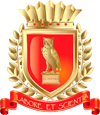Stylistics of the English Language
КомментарииПолная версия работы доступна во вкладке "Файлы работы" в формате PDF
The subject and content of stylistics as a science of language are still not exactly defined, so the problems of stylistics attract more and more attention of linguists, philologists and other specialists. Many linguists agree that stylistics is a branch of linguistics that studies all the variety of expressive means of the language. Stylistics occupies a special place among other language disciplines. In contrast to language disciplines that analyze the composition of language and its categories, stylistics affects various expressive possibilities of language that are characteristic of specific varieties of language use, i.e. styles.
Language stylistics explores the specifics of language subsystems – functional styles and sublanguages characterized by the peculiarity of vocabulary, phraseology and syntax on the one hand, and the emotional, expressive and evaluative properties of various language means on the other hand. Speech stylistics studies individual original texts, considering how they convey the content, not only following the norms known to the grammar and stylistics of the language, but also on the basis of their belonging to the functional styles of the English language. This is its task as a separate science among other language disciplines.
The term "style" has several interpretations. It can indicate a particular differential variety of language, where style is "a language subsystem with a peculiar vocabulary, phraseological combinations, turns and constructions, which differs from other varieties mainly in the expressive and evaluative properties of its constituent elements and is usually associated with certain areas of speech use"[3, p. 455]. Another interpretation of the style is related to the areas of the use of texts.
The system of functional styles of the English literary language is formed by scientific, newspaper`s, journalistic, official business, oratorical, poetic, artistic and colloquial styles. Linguists consider these styles in various aspects. According to I. R. Halperin, the functional style of the language is a system of interrelated linguistic means that serves a specific purpose in human communication. Functional style should be considered as a product of a specific task set by the author of the message [1, p. 249]. Arnold notes that the emergence and existence of functional styles is due to the specific conditions of communication in different spheres of human activity [2, p. 320].
In recent years, the English language has undergone significant changes, primarily in the field of mass communication. These changes, predetermined by global changes in the economic and political life of society, require the translator to be fully aware of the situation in the world. Therefore, there is a need to correctly convey all the stylistic features of the original language with similar in use, equally familiar stylistic techniques of the translation language.
It is known that many authors introduce certain constructions into the text, guided by their own methods; having understood them, the reader is able to better understand the information that the author of the original text wants to convey to him. The translator, as an intermediary between cultures, must convey different shades of the speech of native speakers for different conditions of the language communication.
The role of visual and expressive means of language is to give speech clearness, clarity and imagery. Visual means make our speech illustrative, as they affect not only conceptually, but also figuratively, i.e. they give visual, auditory, olfactory, gustatory, tactile information. Pictorial-expressive means are any means of expression used to achieve imagery. Visual-expressive means serve where the speaker or writer has some new idea that does not yet have any special name. Trope is "the concept of poetics and stylistics, denoting such turns (images) that are based on the use of a word (or a combination of words) in a figurative sense and are used to enhance the figurativeness and expressiveness of the speech" [3, p.227]. Visual and expressive means also help the author to gain individuality of the style, and also they help the translator to correctly translate the original text without losing its meaning and stylistic color.
The image of the sense of the speech requires special stylistic figures, expressive colors of the language. They reveal themselves in the fact that the figurative expression appeared before the scientific-conceptual one: concrete-sensory representations – images, poetic language preceded analytical judgments. Stylistic figures of speech are earlier forms of intellection than similar scientific-logical syllogisms. These are also peculiar syllogisms, because they prove the imaginary truth of their conclusion. They contribute to the image, evaluation, and emotional coloring of written speech, convey information transmitted in a different way.
List of references:
ГальперинИ. Р. – Стилистикаанглийскогоязыка / English stylistics М.: Красанд, 2014. — 336 с.
Арнольд И. В. – Стилистика современного английского языка М.: Флинта, Наука, 2012. — 384 с.
Гальперин И. Р. – Очерки по стилистике английского языка. Опыт систематизации выразительных средств М.: Либроком, 2012 — 376 с.
